GCP Cloud Digital Leader Certification
GCP account and Resource hierarchy
Demo GCP playground KodeKloud
Welcome to the GCP Playground! In this guide, we will walk you through accessing your exclusive Google Cloud Platform environment, provisioning resources, and understanding the sandbox restrictions. Follow the step-by-step instructions below to get started.
Accessing the GCP Playground
To begin, click the Start Lab button. Shortly after, you will receive your unique login credentials alongside the access instructions, as shown below:
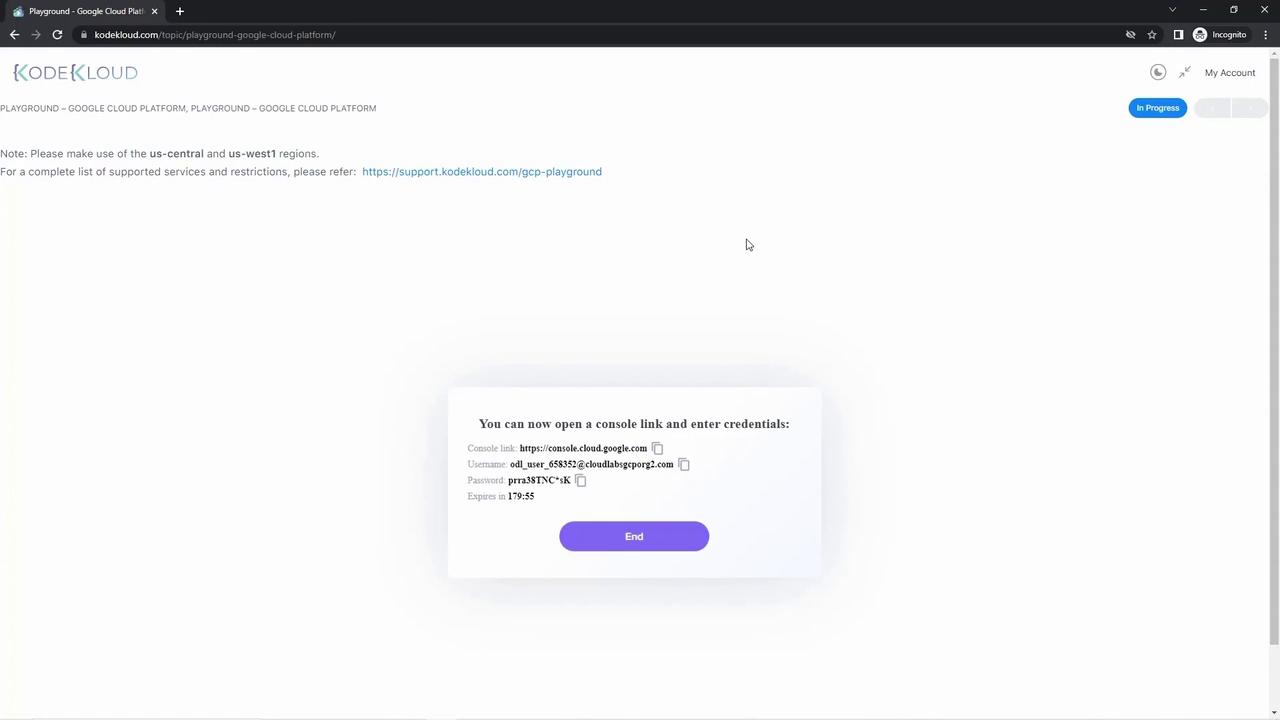
The credentials are valid for 3 hours. Copy the details provided:
Console link: https://console.cloud.google.com
Username: [email protected]
Password: prnA3TnC*%K
Expires in 179:45
Tip
For a smooth login experience, open an incognito or private browsing window. Paste the username and password in the new window and complete the sign-in process. Once logged in, remember to accept the Google agreements for your new account.
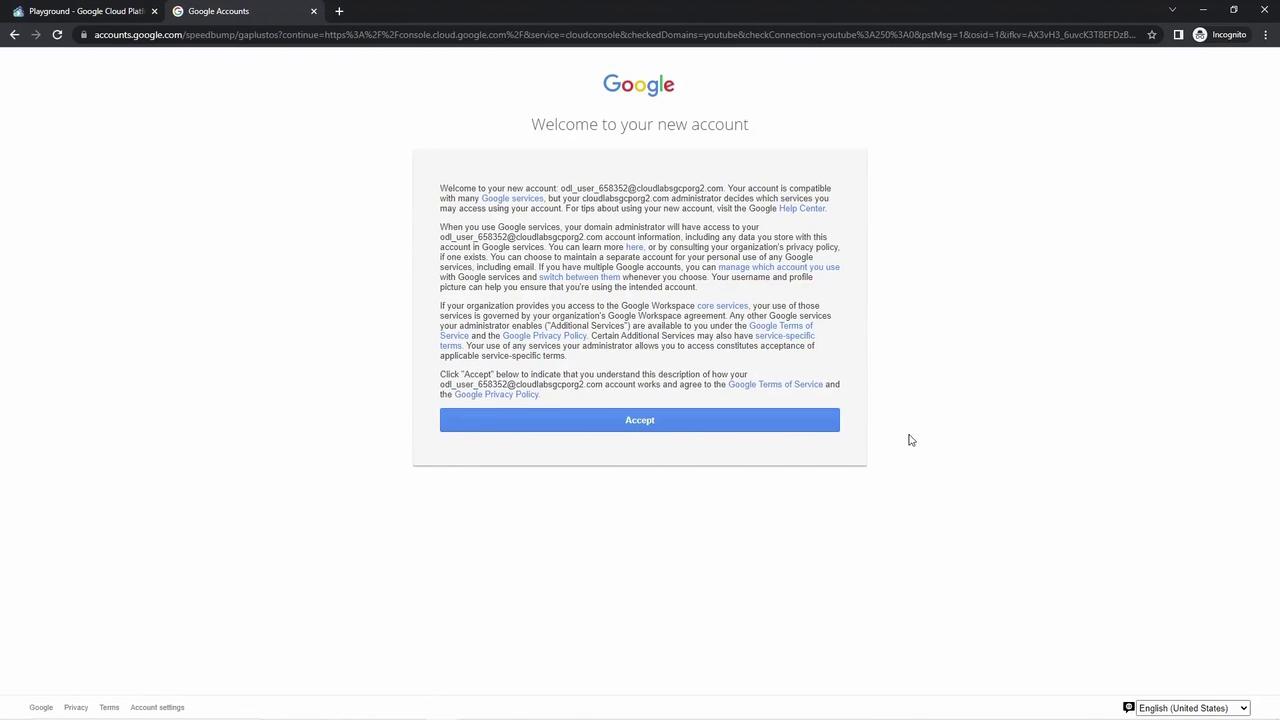
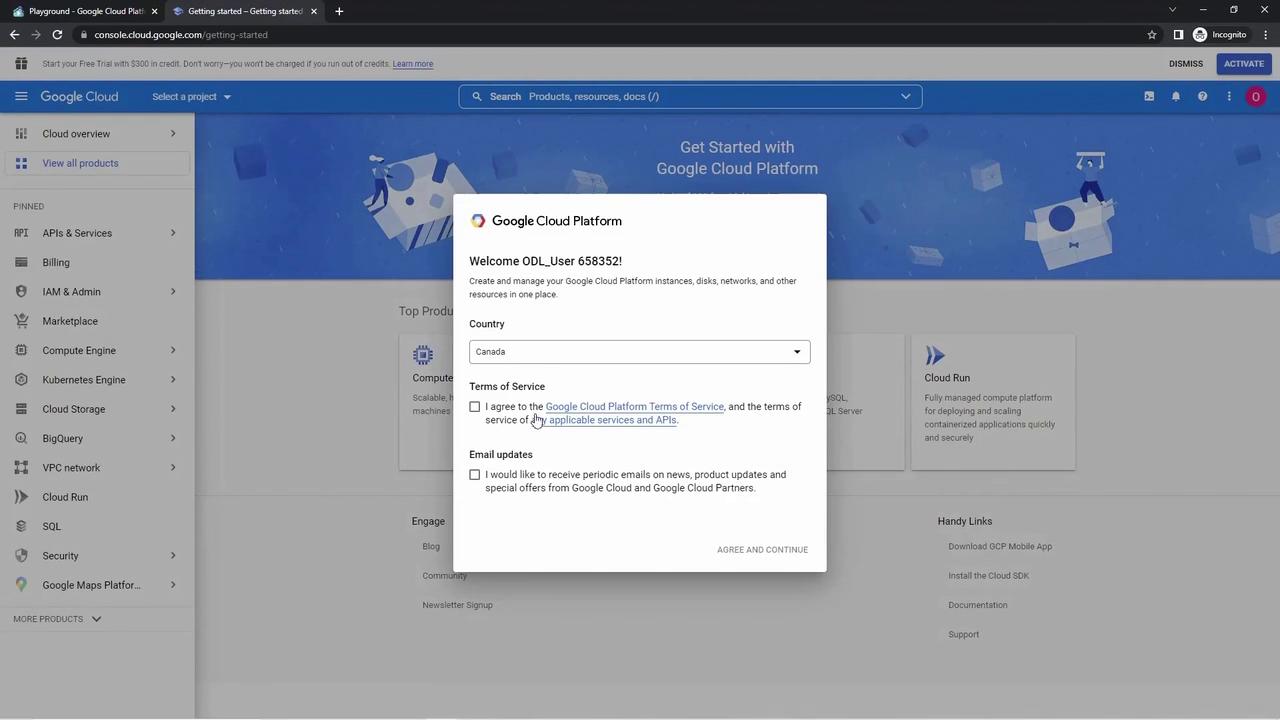
Once you have accepted the agreements, your screen will display an interface similar to the one below. Select the correct organization and project to view your GCP dashboard:
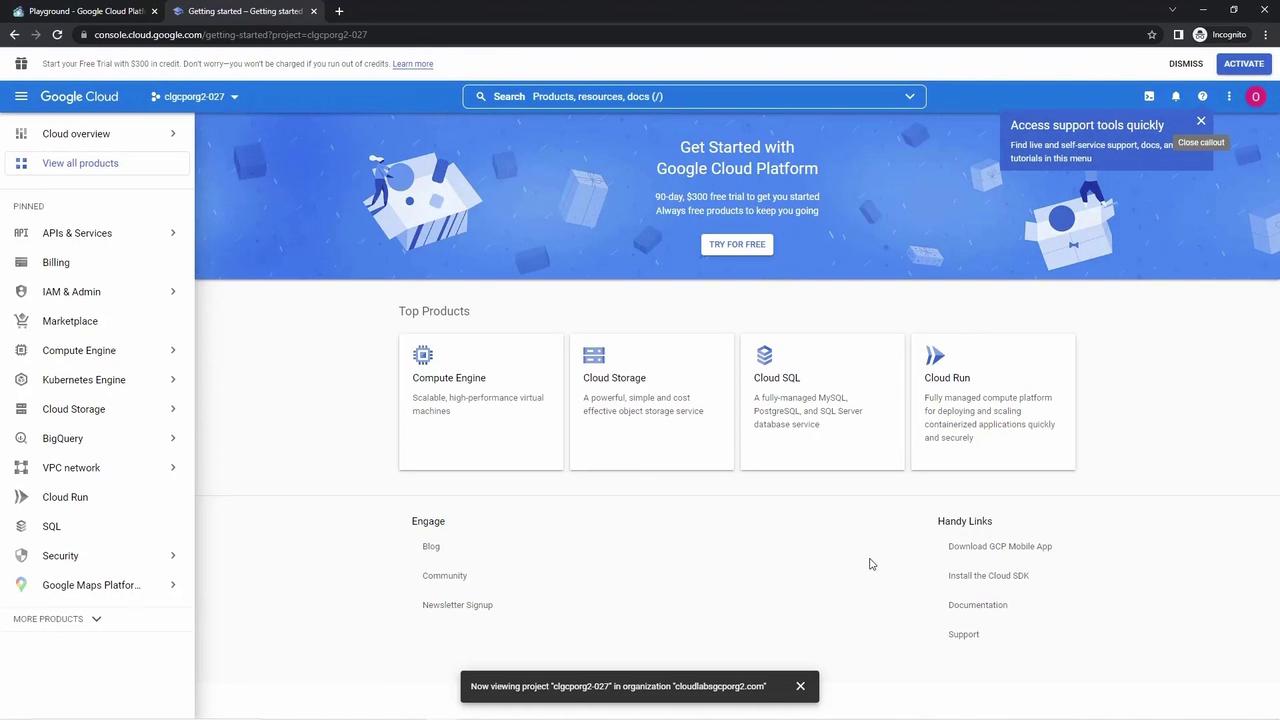
On the left-hand side, services like Compute Engine, Google Kubernetes Engine, Cloud Storage, Cloud Run, and SQL Databases are grouped by type. Now let's start provisioning some resources.
Provisioning a Compute Engine VM Instance
To create a virtual machine (VM) instance, follow these steps:
- Click on the Compute Engine option.
- Select the Create Instance button.
Sandbox Restrictions
Remember that this sandbox environment enforces fair usage policies. Ensure you select allowed configurations while provisioning resources.
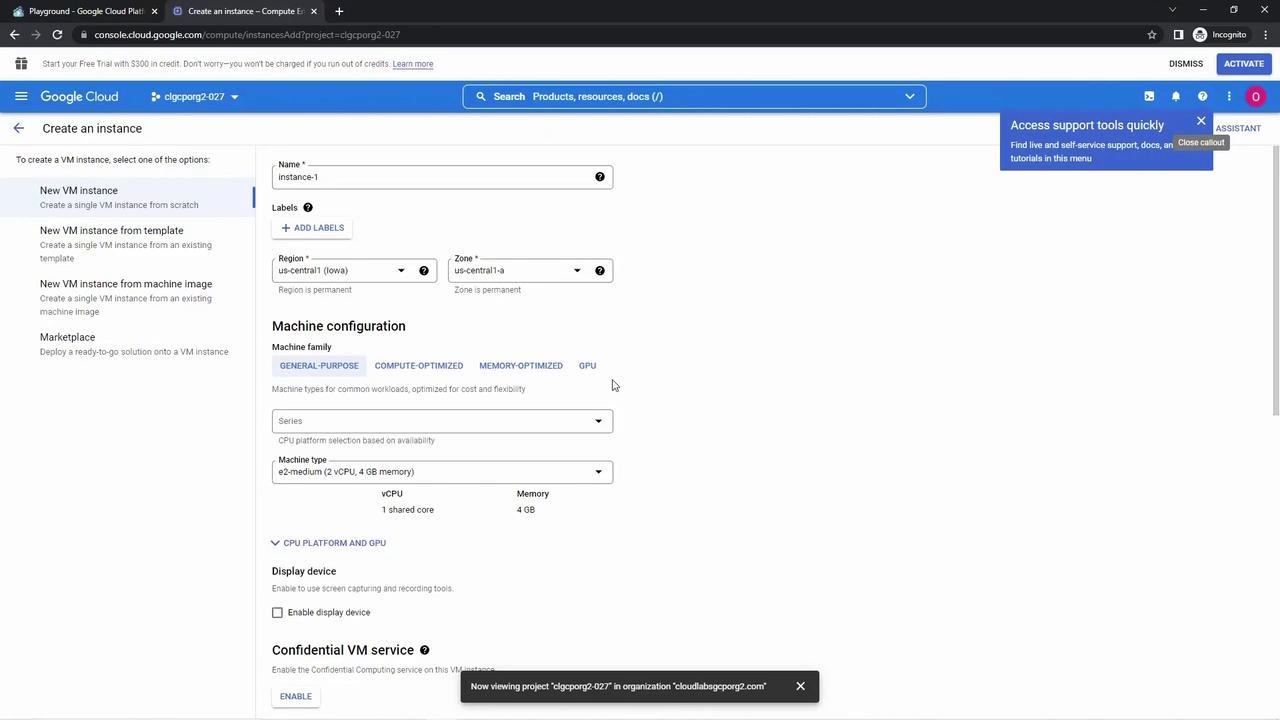
When configuring the instance:
- Choose either an E2 Medium or N1 Standard machine type (or a smaller option). This guide uses E2 Medium.
- Scroll down to select the disk type. Change it from a balanced persistent disk to a standard persistent disk and set the disk size to 15 GB.
- Ensure that HTTP and HTTPS traffic are enabled.
- While the default image is Debian Linux 11 Bullseye, you may select another available VM image if necessary.
Click the Create button to initiate the provisioning process. This step may take a few minutes.
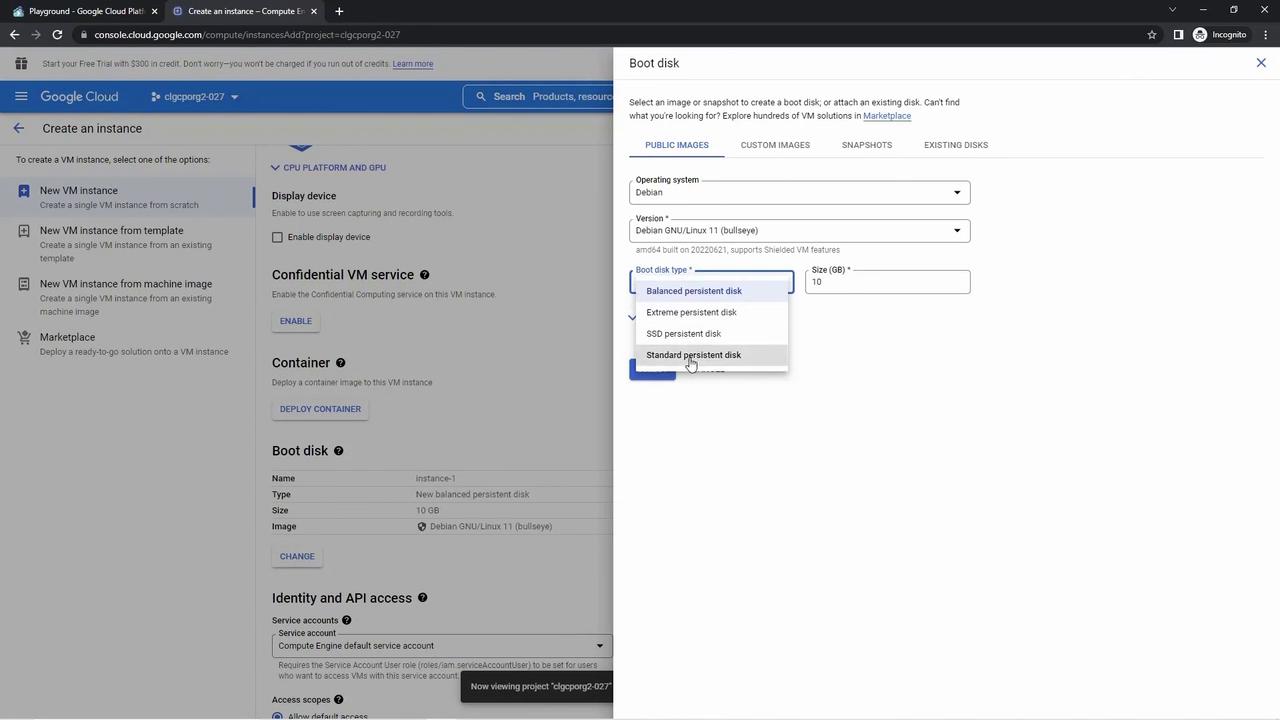
Setting Up Firewall Rules
While your VM instance is being created, navigate to the firewalls page to configure additional rules:
- Verify that the default HTTP and HTTPS firewall rules are active.
- Create a new firewall rule to allow inbound SSH access with the following settings:
- Target: All instances in the default VPC (including your new VM).
- Source Range: 0.0.0.0/0.
- Allowed Port: TCP 22.
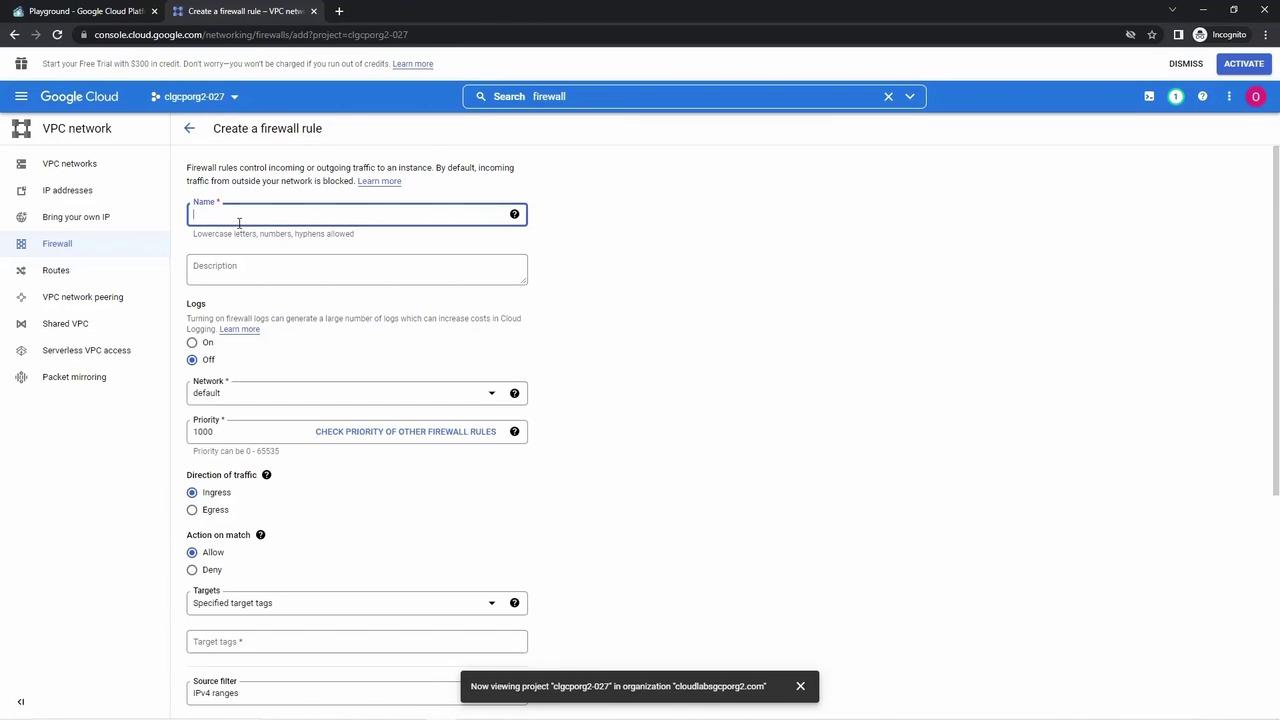
After creating the rule, click on it to review its details and ensure it applies correctly to your instance.
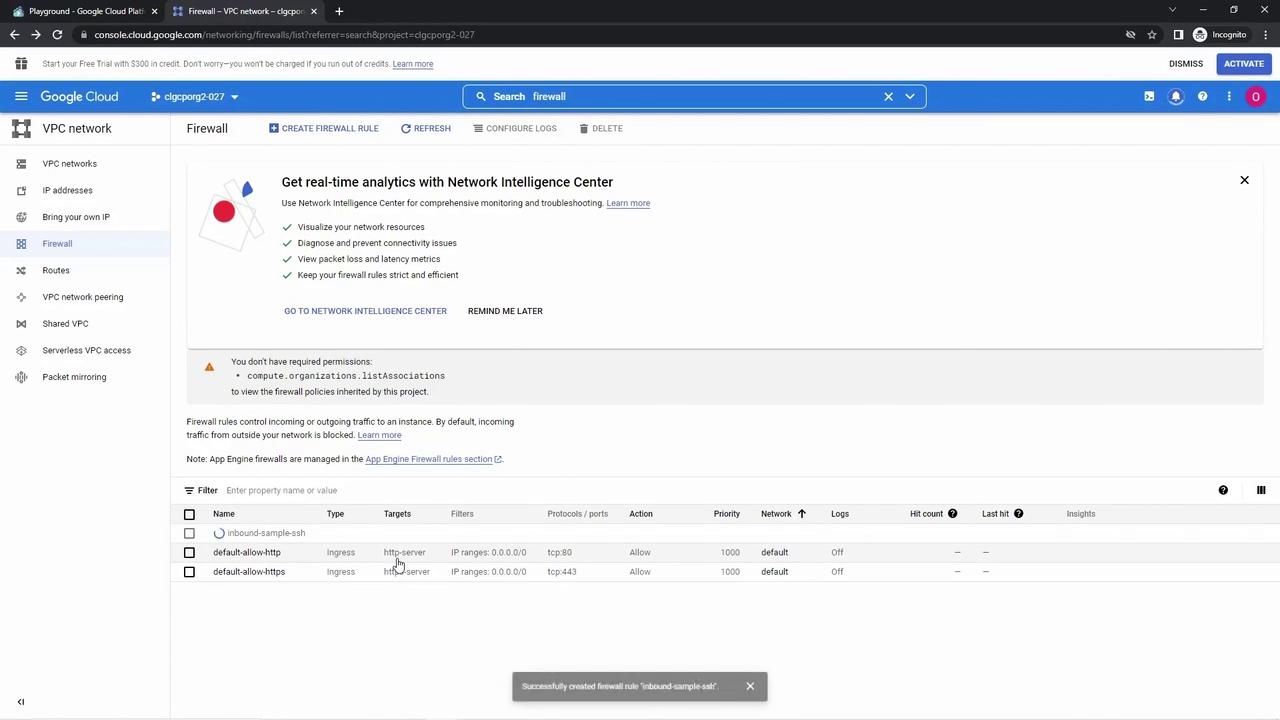
The new firewall rule should be applied to your instance (labeled as "instance dash one").
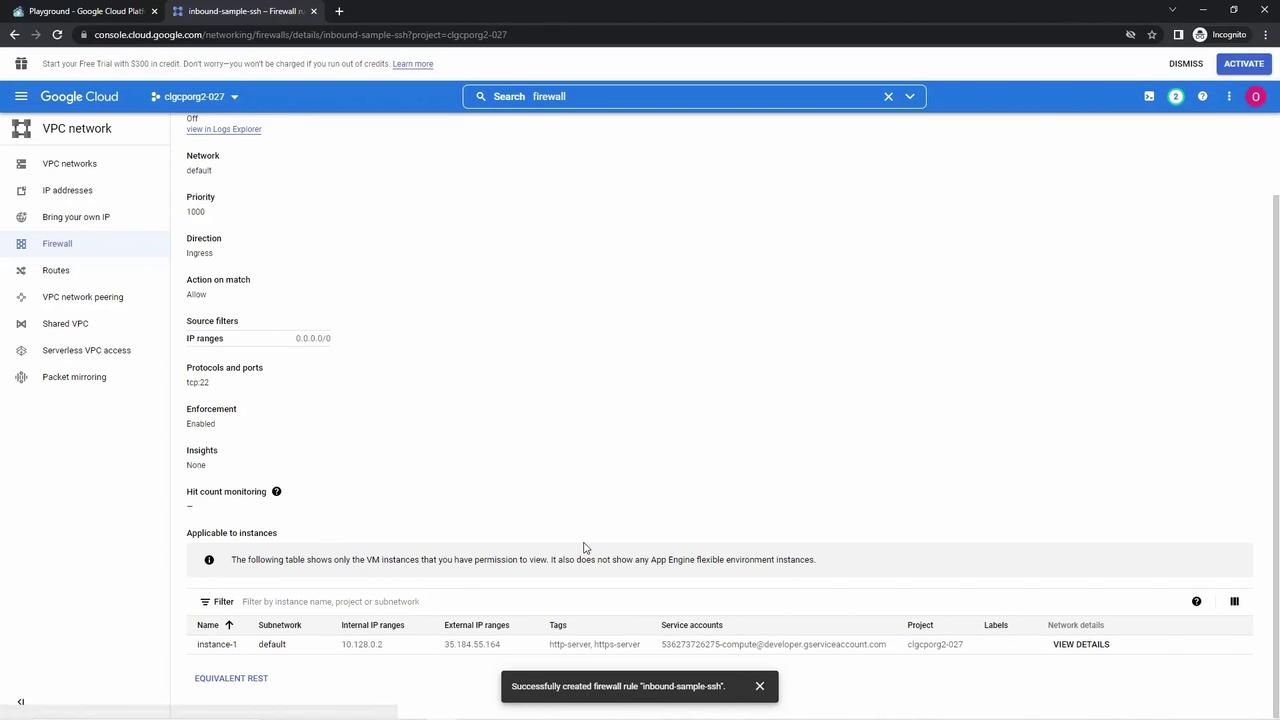
Connecting to the VM Instance
Once the firewall rule is set, return to the VM instances page and click the SSH button to connect via Cloud Shell. A new tab will open, establishing an SSH connection to your VM instance.
Overview of Playground Restrictions
Before proceeding further, familiarize yourself with some key restrictions in the GCP Playground:
| Service | Restrictions | Example/Note |
|---|---|---|
| Compute Engine | - Allowed machine types: E2 Medium or N1 Standard (or smaller)<br>- Allowed regions: US Central or US West 1 only<br>- Max CPU quota: 5 CPUs<br>- Disk size: Standard persistent only (up to 50 GB total) | Ensure your instance configuration complies. |
| Google Kubernetes Engine | - Only GKE Standard clusters are permitted<br>- Node pools are limited to a maximum of three E2 Medium nodes<br>- Total disk size across nodes: 50 GB maximum | Follow documented guidelines for cluster setup. |
| SQL Databases | - Only single-zone deployments<br>- Machine types: Standard or lightweight<br>- Maximum: 4 CPUs and 15 GB storage | Use single-zone deployments for SQL instances. |

Additionally, for SQL databases:
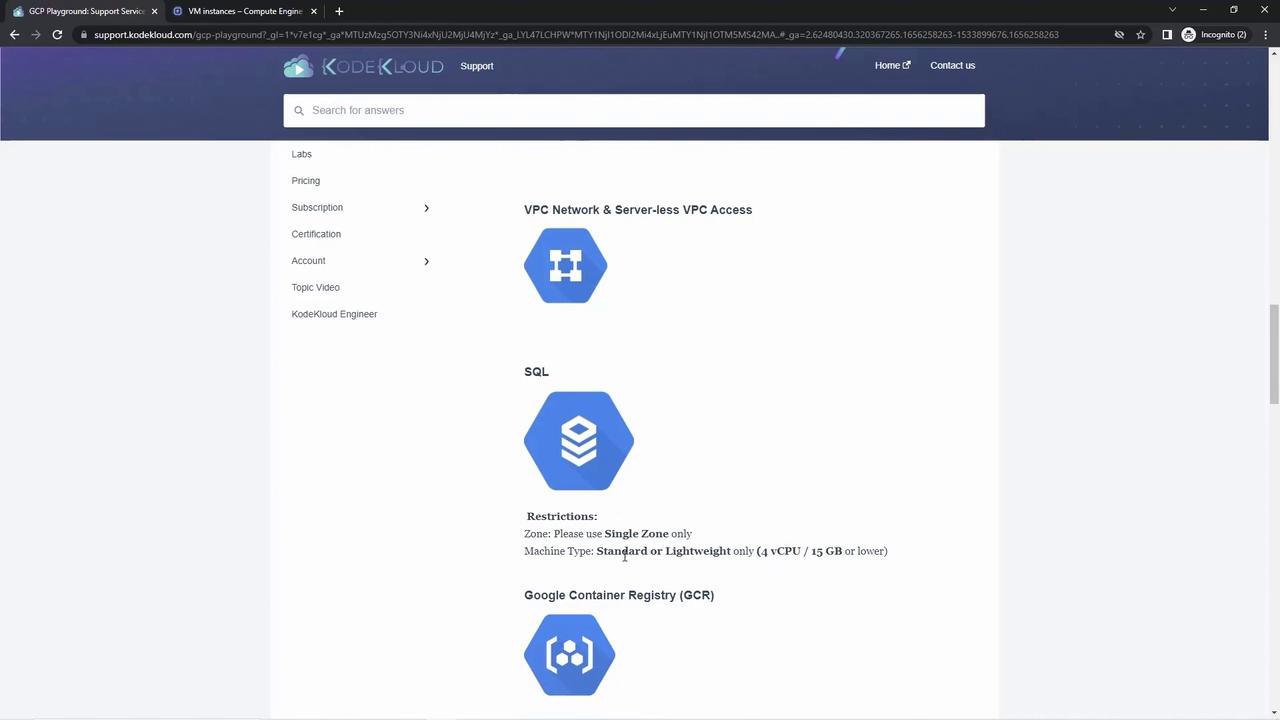
For a complete list of restrictions and permitted services, refer to the support documentation provided in your GCP Playground dashboard.
Final Notes
This concludes the walkthrough of the GCP Playground. By following this guide and adhering to the outlined restrictions, you can safely experiment with GCP services in a secure sandbox environment.
For additional details on GCP services and best practices, consider visiting the following resources:
Happy learning and exploring!
Watch Video
Watch video content